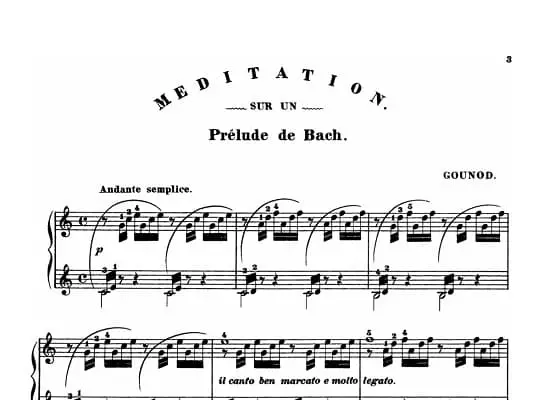- Home
- Piano Sheet Music
- Satie Gymnopedie
Satie Gymnopedie Nr.1: Get The Sheet Music and Piano Practice Tips Here
This article may contain compensated links. Please read the disclosure for more info.
Eric Satie Gymnopedie Nr. 1 is a beautiful and tranquil piece for piano solo. Here you can get free sheet music and helpful tips on learning it.
Eric Satie
Erik Satie was a French avant-garde pianist and composer who wrote several pieces for piano. Some are a bit quirky and fun, like the "sarcastic" Sonatine Bureaucratique.
 Erik Satie (1866-1925)
Erik Satie (1866-1925)Others are timeless and serene, like the famous "Gymnopedies" and the "Gnossiennes."
One of the most well-known pieces for piano is the first of the 3 "Gymnopedies" that you can sometimes hear as background music in movies.
The piece is excellent for an intermediate-level student.
It is relatively easy since it is so slow. Still, there are some technical challenges in keeping the melody flowing and balanced above the repetitive accompaniment.
The change of the accompaniment from one hand to the other also needs to be smooth and balanced. Let's have a look at how you can practice it!
How to Play Satie Gymnopedie Nr. 1
First, let's start by watching the piece being played beautifully! Click on the image to open the video in a new window:
You can print the sheet music for free, here:

How to Practice Eric Satie Gymnopedie 1
Left hand
- Start by learning the accompaniment. It's easy. In the introduction (the first 4 measures), the left-hand plays the bass, and the right-hand plays the chords. Practice this until it is even and balanced.
- Continue learning the left hand, which takes over the accompaniment in measures 5-8. First practice the bass only, played with the tip of your 5th finger.
- Now, learn to play the chords. Then combine the bass with the chords. Practice the big arm movement from the bass to the chord, by playing very slow but moving your arm swiftly in between the bass note and the chord.
- In measures 9-12, the left hand will play only the bass again as the right-hand plays the chords.
Right Hand
- The right hand's melody should be played with a "singing tone." You will play legato and practice playing beautiful and connected phrases.
- In measures 9-12, you will play the treble F# and then keep it "ringing" while you play the chords of the accompaniment as in the first measures. You do this by keeping the F# as you change the pedal.
- In measures 19-21, there is a similar pattern. This time you will keep the E and play the chords "around" it. You need to change the finger while holding it (see the video at 0:55-1:03).
- The same techniques are used in measures 48-51 and 58-60.
- When playing the last chords, make sure to relax your arms and shoulders while really stretching the fingers so that all notes can be heard clearly, but softly and simultaneously.
Both Hands
- In measures 24-26, the large chord played in the left hand is impossible to play for a smaller hand.
- The top note should then be played softly in your right hand, with the melody.
- The same can be done in measures 29-31, 63-65, and 68-70.






